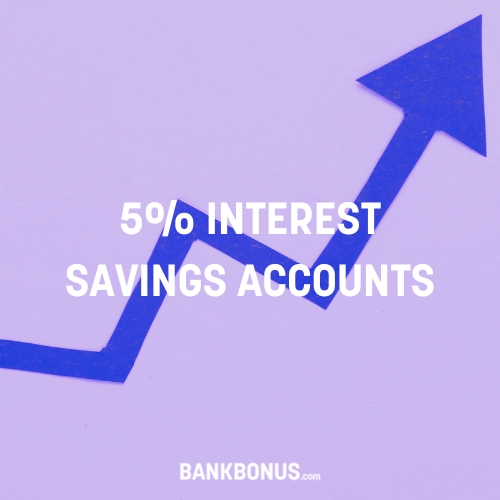Setting up bank accounts for kids is the best way to help them learn how to manage money. Hands-on experience is the best way to understand how to make complex financial decisions and to see the benefits of saving.
I’ve rounded up the top savings, checking, prepaid card, and credit union accounts for kids to help you set up your child’s accounts.
What Are Kids Bank Accounts?
A kids bank account is an account with a custodian owner. Until kids are 18, a custodian must be named on their account, usually a parent or guardian.
Fortunately, many types of the best bank accounts for kids, including checking and savings accounts, allow you to teach kids about financial literacy from a young age.
Benefits of Kid Bank Accounts
Teaching kids how to save, spend, and give at a young age makes handling finances natural. And while kids learn many topics in school, financial literacy isn’t usually one, so it’s up to parents to teach their kids how to handle money.
The best way to do this is to give kids bank account access at appropriate ages. Even though a parent or guardian must be the custodian until the child hits majority age, kids can handle their money with the parent’s approval, teaching them how to make smart financial choices.
Best Savings Account for Kids
🏆 Capital One Kid Savings Account
Capital One offers a robust savings account for kids that pays interest, doesn’t have a minimum balance, and provides a great mobile app for kids and parents.
Overview
Capital One’s bank account for kids and teens grows with your child as they understand and handle more financial responsibilities.
The Capital One kids’ savings account doesn’t require a minimum balance and pays interest on any balance, even $1. I love that there are no fees, and as kids hit their teen years, they can upgrade to a teen account that includes a debit card.
Requirements
The Capital One Kids Savings Account is a joint account between a parent and child when kids are 12 or under. For any child under 18, the adult must open the account in their and the child’s names. After age 12, the adult is the custodian, but before 12, it is a joint account.
To activate your account, you must either link your own Capital One account or an external account to fund the Kids Savings Account. You can also deposit a check using the mobile app if you prefer.
Fees
The Capital One Kids Savings Account charges no fees. This allows kids to keep their contributions and earnings and see the true value in compound interest.
APY
Capital One currently pays 0.3% on any high or low balance.
Additional Features
- Robust mobile app for parents and kids
- Parents can set up automatic deposits, such as an automatic allowance
- You can create multiple accounts for each of your child’s savings goals
- Parents can link Capital One or other bank accounts for easy funding
Learn More:
Best Checking Account for Kids
🏆 Copper
Finding a checking account for kids isn’t easy, but Copper offers teens features that simplify having their first checking account. It’s affordable, educational, and offers more features than basic adult checking accounts. However, Copper is a fintech app; the banking services come from Evolve & Trust.
Overview
The Copper checking account for kids is an account owned by a parent or guardian, allowing teens to learn how to handle a checking account and make good spending decisions. The account doesn’t have any balance requirements.
Copper calls itself the ‘Knowledgeable Bank’ because they instill good financial habits in teens while they learn.
To qualify for a Copper checking account, children must be ages 13 to 17, and both teens and parents have log-ins so everyone is updated in real-time.
Requirements
The only requirement to open an account is that a parent must open it with you since it’s meant for minors. You don’t need a minimum opening or ongoing balance.
Fees
The Copper checking account is free for teens. There aren’t any monthly maintenance, overdraft, or other fees. However, the other bank may charge a fee if your teen uses a third-party ATM to withdraw cash.
APY
One downside of the Copper checking account is that it accrues virtually no interest unless you count the 0.001% they pay.
Additional Features
- Access to 55,000 fee-free ATMs
- Automatic savings option
- $3 referral bonus per referral
- Parents can track and monitor spending
- Offers financial lessons called ‘Cheat Codes’ to teach kids about finances
Learn More:
Best Debit Card for Kids
🏆 Greenlight
Giving kids a prepaid debit card is often the best way to introduce them to finances. Parents have control over the money on the card, and apps like Greenlight can even control where kids spend the money.
Overview
The Greenlight debit card is strictly for kids but offers parents plenty of control. One Greenlight account provides debit cards for up to five kids, and the user-friendly app allows kids and parents to have conversations about spending, saving, and giving. Parents can also set controls, limiting where kids spend money or how much they spend.
Like most custodial accounts, a parent must open the account, and then kids can take control later on.
Requirements
Greenlight has no requirements, including age. The accounts are open to children and adults of all ages as long as parents open the account.
Fees
Greenlight charges monthly fees and offers three tiers.
Greenlight Core – $4.99/month
- Includes up to five debit cards
- App for parents and kids
- Core financial tools
- Parental controls
- Kids earn a 1% reward annually on savings (paid monthly)
- Educational games
- Credit cards available for parents
Greenlight Max – $9.98/month
Includes everything from above plus 2% annually on savings and the following:
- Investing for kids and parents
- Kids earn 1% cash back on purchases
- Priority customer support
Greenlight Infinity – $14.98/month
Includes everything from above plus 5% annually on savings and the following:
- Family location sharing
- SOS alerts
- Crash detection
APY
The interest earned depends on the chosen account and ranges from 1% to 5%.
Additional Features
- Parents can set flexible controls
- Parents can set up automatic deposits, such as for allowance
- The Greenlight card can be used almost anywhere (age-appropriate)
- Kids can dabble in the world of investing with the two higher-tier accounts
- Teens can set up direct deposit
Learn More:
Best Bank Account for 13 Years Old
🏆 USAlliance Financial MyLife Savings
The USAlliance Financial MyLife Savings account grows with your child. It starts as a basic savings account and grows into a checking or more robust savings beginning at age 13.
Overview
USAlliance rewards kids for saving by providing a higher APR on the first $500 saved. They also pay ‘Birthday Bucks,’ a $10 annual reward on their birthday up to age 12.
As kids age, the account grows with them and can become a MyLife Checking at age 13 with a debit card. However, teens don’t have to close their MyLife Savings and can continue earning interest on their savings.
The account doesn’t have a minimum balance, and it’s free to join the USAlliance credit union.
Requirements
The only requirement for MyLife Savings is the age requirement. You must be under 12 for the ‘Birthday Bucks’ and APY bonus.
Fees
The USAlliance Financial MyLife Savings account charges no fees, and kids earn a nice bonus annually if they save. But, of course, the earlier you open an account, the more they’ll earn.
APY
Kids earn 2% APY on the first $500 saved to show them how compound interest works and to motivate them to save.
Additional Features
The MySavings account doesn’t offer many other features. Instead, it’s a simple savings account that transfers to a simple checking account at age 13, helping kids learn how to manage their money.
Learn More:
Best Bank Account for Kids with High Interest
🏆 Spectrum Credit Union MySavings Youth Account
The Spectrum Credit Union MySavings Youth Account has an incredible APY for kids and teens up to age 21! That’s not a typo. They believe you are never too young to start saving and that kids should learn the benefit of compound interest.
Overview
The MySavings Youth Account is open to kids of all ages, and you don’t have to close or transfer the account until age 21. At age 13, kids can request a debit card, but the account remains a savings account; they don’t offer a checking account for kids or teens.
Spectrum is a credit union with membership requirements; however, if a family member is eligible through employment or geographic location, kids can join too. To remain eligible, at least one family member must have at least $25 in an account.
Fees
The Spectrum MySavings Youth Account doesn’t charge monthly maintenance fees. However, if you aren’t a member, there is an $8 annual charge.
APY
This is the best part. Spectrum pays 7% APY on the MySavings Youth account!
Requirements
You must belong to Spectrum Credit Union, which, if you don’t qualify through your employer or location, you can still join, but for a fee. However, they make it easy to be ‘eligible.’ You are eligible even if you worked for a company in the past that qualifies but no longer works there. If you aren’t eligible, there is an $8/year charge.
Additional Features
Spectrum doesn’t offer many bells and whistles. However, they are heavy on financial education, providing many opportunities for kids to learn about money.
Honorable Mentions
The bank accounts for kids mentioned above are our top picks, but the following accounts deserve an honorable mention:
1. Northpointe Bank Kids Savings Account
Northpointe doesn’t offer a lot of bells and whistles, but it pays a nice APY of $1.5 on the first $1,000 deposited. The minimum balance required is $10, and kids can open a savings account up to the age of 18.
2. Axos First Checking
Axos First Checking is a checking account for teens. It earns a small 0.10% APY and has no fees. However, Axos reimburses up to $12 in third-party ATM fees per month, and it sets limits so teens can’t withdraw too much money daily.
3. FamZoo
FamZoo is a family money management app. A family account includes prepaid debit cards for your kids that you can automatically fund from your FamZoo app. Parents and kids share a dashboard so everyone is on the same page financially, and parents can also reward kids for doing their chores by paying allowance automatically.
4. GoHenry
GoHenry focuses on kids’ financial literacy with in-app lessons. Kids can also customize their debit cards, and parents can set up automatic transfers for allowance or manually transfer funds. GoHenry also allows parents to set up gift deposits or pay their own ‘interest rate’ based on kids’ savings.
5. PNC ‘S’ Is for Savings
PNC uses Sesame Street characters to get kids excited about saving. The PNC account has built-in goal-setting tools and pays a low-interest rate to help kids understand compound interest. To avoid the $5 monthly fee, you must set up at least $25 monthly recurring deposits.
FAQs
Opening a kids bank account is a great way to teach kids financial literacy. Here’s what you should know.
Are Bank Accounts for Kids Safe?
Ensure a kid’s account is FDIC-insured, and never share the ID or password with anyone. Most kid’s accounts link to your ‘adult accounts,’ so you only open accounts at banks you trust. But if you open one at a separate bank, ensure it’s FDIC-insured and uses encryption and bank-level security.
What Do You Need to Open a Bank Account For Your Child?
To open a bank account for your child, you must provide identifying documents for yourself, including your driver’s license or passport and Social Security number. You’ll also need your child’s full name, birthdate, and Social Security number to open an account.
Does an Adult Have to Be on a Child’s Bank Account?
Children’s bank accounts are custodial until they turn 18. Parents must be on the account and, with most banks, have some control over the account to help kids make good financial decisions.
Can a Kid Have Their Own Debit or Credit Card?
Many kids’ bank accounts include a debit card (not a credit card). Kids can use the card anywhere the brand, such as Visa, is accepted. However, some bank accounts allow parents to limit how much or where kids use the card.
What Is a Custodial Account?
A custodial account is a bank account set up by a guardian or parent for a minor. The minor owns the account, but the custodian has control until the child is majority age.
Do Kids Pay Taxes on Interest Earned on Savings Accounts?
Children need to pay taxes on interest from savings accounts if it’s ‘unearned income,’ such as interest over $2,300 per year.
The Bottom Line
Choosing a bank account for your child may feel overwhelming, but any account you choose will benefit them. The key is to open an account early, understand the requirements and fees, and help your child learn how to make important financial decisions.





Comments are closed.
Comments are closed here.